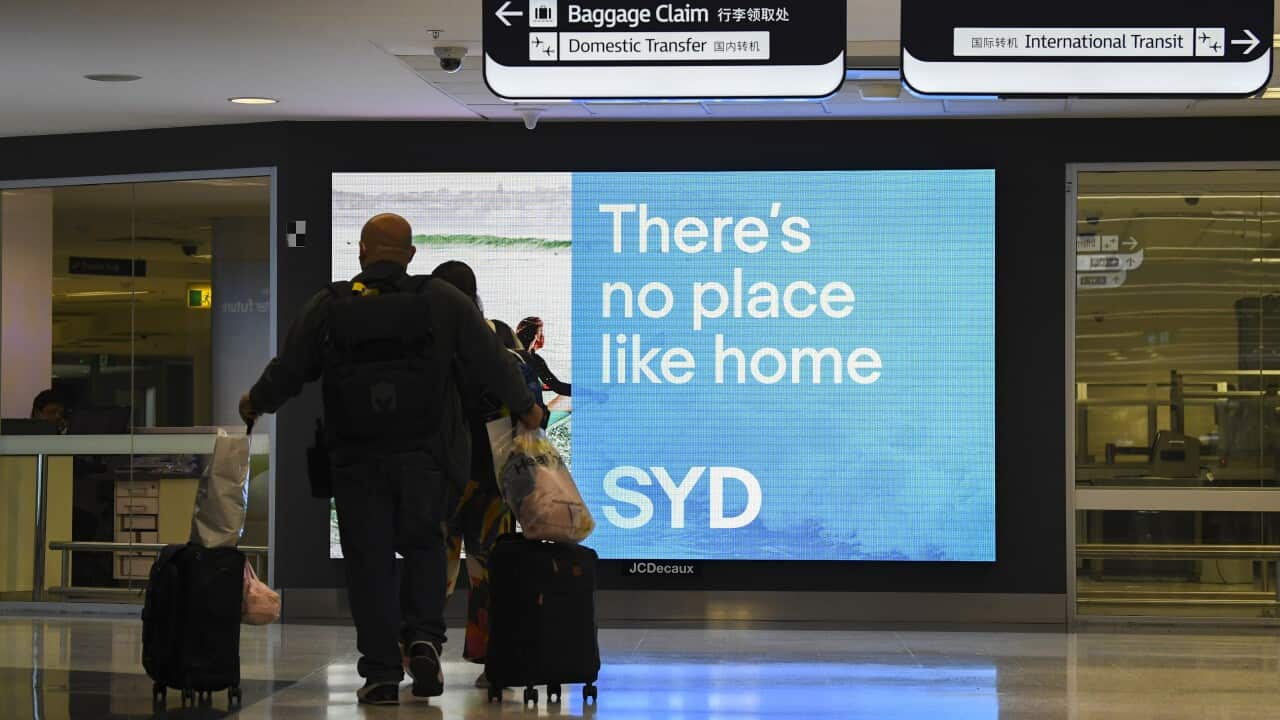KEY POINTS
- Pandemic to cost Australia nearly 500,000 migrants.
- International students driving migration rebound.
- Migration to return to pre-pandemic levels in 2022-23.
Migrants are returning in droves after the COVID-19 pandemic, but border closures will leave Australia's population older and smaller than predicted, a new report warns.
The Centre for Population's annual statement, to be released on Friday, will shed new light on post-pandemic Australia, showing COVID-19 will cost the country nearly half a million migrants over the next four years.
Treasurer Jim Chalmers warned Australia still faces "crippling" labour and skills shortages, exacerbated by the COVID-19 pandemic and "a decade of migration policy chaos and under-investment in skills and training" under the former government.
"[But] Australia’s migration settings need to be sustainable, serve Australia’s national interest, and not be a substitute for training and building the capacity of our domestic workforce," he said.
Here are the key takeaways.

Treasurer Jim Chalmers says migration is not the "only answer" to Australia's skills shortages. Source: AAP / Jono Searle
Pandemic blows Canberra-sized hole in population growth
COVID-19 left Australia’s population older and smaller than expected.
Travel restrictions meant overseas migration plunged to record lows in 2020-21, with Australia losing 85,000 people in its first net migration decline since World War Two.
While there are signs of recovery, the pandemic is still expected to cost Australia 473,000 migrants by 2025-26.

Workers in hazardous material overalls are seen outside of a public housing tower along Racecourse Road in Melbourne. Source: AAP
She said Australia's decision not to provide financial support for international workers during the pandemic, was partly behind the decline.
“So in large part, what has played out has been inevitable and it has been the result of policy,” she told SBS News.
“They told these migrant workers that they should go home, and of course that is what many of those workers did. Those who decided to stay went through incredibly difficult times … have become much more wary of government, and much more wary of the kinds of opportunities on offer to them.”
Migration returning to pre-COVID levels
Reopening the border unsurprisingly ensured a “sharp increase” in migrant arrivals.
The return of vaccinated travellers, skilled workers, and students from late 2021 is expected to have increased Australia’s net migration by around 150,000 over 2021-22.
It’s set to increase even further in 2022-23, when 235,000 net arrivals are expected. That’s a return to pre-pandemic levels, which the report tips to continue for the foreseeable future.
But Professor Knox cautioned against relying too heavily on projections.
"What we have seen as a result of the pandemic is that you won't necessarily have sufficient supply of migrant workers to meet the targeted rates of migration," she said.
Student influx a major boost
A “strong recovery” in international student arrivals is driving the rebound.
Students forced to study online during the pandemic are taking advantage of in-person learning, travelling to Australia in droves.
The number of international student arrivals jumped to 122,000 between December 2021 and October 2022.

Graph showing yearly intake of international students.
Australian students who remained in the country during the pandemic may also decide to leave, it says.
Australia first began to restrict travel from mainland China — which had contributed more than a third of its international student intake — in February 2020, leaving many stranded overseas.
The border slammed shut to all non-residents the next month.
For a few months in mid-2021, those tough restrictions meant student arrivals were virtually non-existent, despite repeated pleas for exemptions from the university sector.
Government scrambles to plug migration gaps
Labor is boosting Australia's annual skilled migration intake from 160,000 and 195,000, and is also conducting a broader review into making the system simpler and more effective.
It has also accepted that short-term migration may be necessary to meet an election commitment, which would give all aged care residents 24/7 access to a registered nurse.
But Mr Chalmers insisted migration is "not the only answer" to Australia's crippling skills and labour shortages, stressing Labor's plans to broaden TAFE funding and make childcare cheaper.
Professor Knox warned a large section of the labour force — including younger workers and older workers, women, and disadvantaged workers - remains underemployed and underutilised.
"We need to be shoring up sustainable employment opportunities for those workers, as well as keeping an eye on rates of migration," she said.










